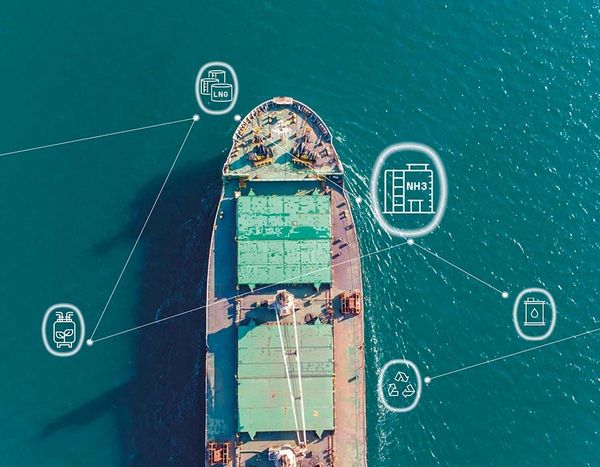Green Ammonia

Ammonia: zero-carbon fertiliser, fuel and energy store
What is green ammonia?
- Green Ammonia offers a solution to the decarbonization challenge with real potential to unlock decarbonization opportunities in several key industries – Shipping fuel, Power Generation, Agriculture and as a Hydrogen Carrier.
- Green Ammonia is set to emerge as the Hydrogen carrier – for difficult to reach areas, easier and cheaper to store, transport and readily cracked and purified to give hydrogen gas when required.
- As a Zero-carbon fuel – ammonia can be burnt in an engine or used in a fuel cell to produce electricity. The maritime industry is likely an early adopter, replacing fuel oil in marine engines.

What’s the future for green ammonia?
The production of green ammonia could offer further options in the transition to net-zero carbon dioxide emissions. These include:
- Energy storage – ammonia is easily stored in bulk as a liquid at modest pressures (10-15 bar) or refrigerated to -33°C. This makes it an ideal chemical store for renewable energy. There is an existing distribution network, in which ammonia is stored in large refrigerated tanks and transported around the world by pipes, road tankers and ships.
- Zero-carbon fuel – ammonia can be burnt in an engine or used in a fuel cell to produce electricity. When used, ammonia’s only by-products are water and nitrogen. The maritime industry is likely to be an early adopter, replacing the use of fuel oil in marine engines.
- Hydrogen carrier – there are applications where hydrogen gas is used (e.g. in PEM fuel cells), however hydrogen is difficult and expensive to store in bulk (needing cryogenic tanks or high-pressure cylinders). Ammonia is easier and cheaper to store, and transport and it can be readily “cracked” and purified to give hydrogen gas when required.
Decarbonisation of ammonia production
Reducing the amount of carbon dioxide produced during the ammonia manufacturing process is critical to achieve net-zero targets by 2050. The best way to reduce carbon emissions when making ammonia is to use low-carbon hydrogen
Green Ammonia for Sustainable Energy
Benefits
Disadvantages
Disadvantages
- We know how it works, and there is a firm belief in the industry that we will be able to get the necessary rules and regulations in place for its use
- Ammonia is an efficient fuel and takes up less space than hydrogen
- Advanced testing is underway, and some industries see the potential in ammonia – this could bring the price down. Black ammonia is already available in many key ports globally, small gas carriers (LPG vessels) could be converted into bunker boats. This enables the potential fast creation of a global ammonia bunker infrastructure. In the beginning, some ammonia would be black or blue - the latter means its CO2 is captured and stored in depleted oil fields. Ship engines and fuel cells are colour blind when it comes to future fuels, so global coverage could be enabled by black/blue ammonia, and as the production of green hydrogen increases, shipping could move from black/blue to green ammonia
Disadvantages
Disadvantages
Disadvantages
- Toxic, but humans can smell it before it reaches dangerous levels. Requires post-treatment of exhaust gasses if burned in combustion engines. This is a known technology. No post-treatment is needed if ammonia is converted into electricity in a fuel cell, in which there is great future potential because a fuel cell gets more energy out of the fuel than combustion engines do: The same ship would need less of the expensive fuel if it had fuels cells instead of combustion engines onboard.
- Ammonia could potentially harm sea life if it were to be spilt into the ocean. Great care must be taken to ensure that it is safe to “use"
- The price of green ammonia is still very high, making it difficult to consider using it on a commercial scale – at least for the time being
This website uses cookies.
We use cookies to analyze website traffic and optimize your website experience. By accepting our use of cookies, your data will be aggregated with all other user data.